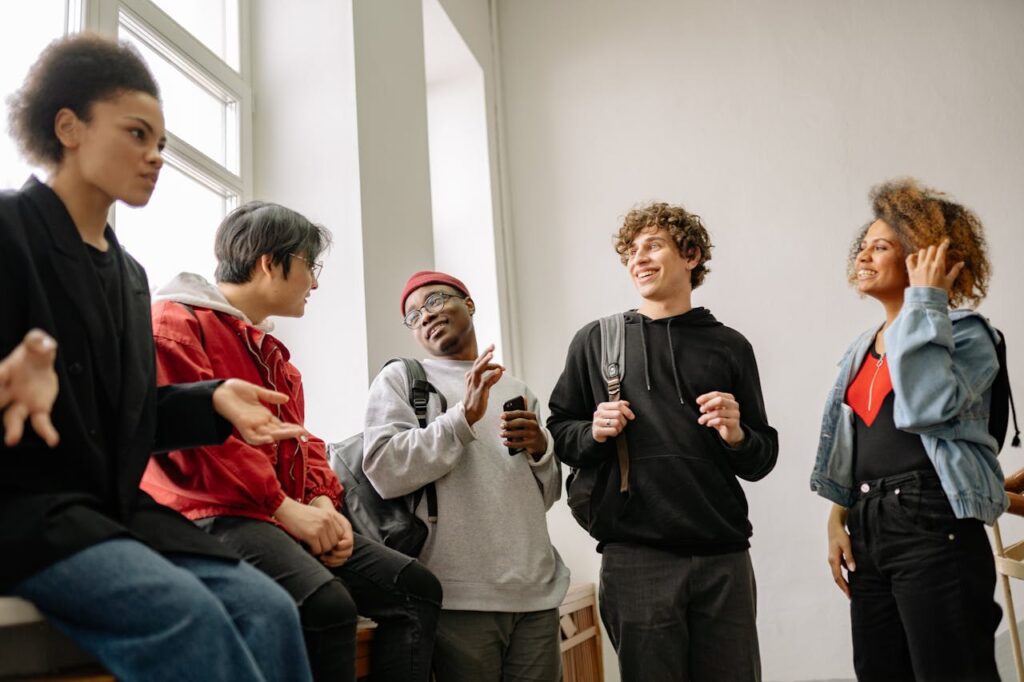We don’t just inherit our eye color or the shape of our smile from our families.
We also inherit patterns — ways of relating, coping, and surviving that were passed down long before we were born.
Many of us carry emotional pain that didn’t start with us. We may sense it in the tension we hold in our bodies, the anxiety that surfaces without clear cause, or the patterns in relationships that repeat even when we try to change. This is the impact of intergenerational trauma — the unhealed wounds of one generation being transmitted to the next.
Healing this kind of trauma is not just a personal act. It is a profound reclamation — of self, of story, and of possibility for future generations.
What Is Intergenerational Trauma?
Intergenerational trauma refers to the transmission of emotional pain, fear, shame, or dysfunction from parents (or earlier ancestors) to their children. Sometimes it’s rooted in large-scale historical traumas like war, displacement, racial oppression, or cultural loss. Other times, it’s more personal — growing up in a family marked by emotional neglect, addiction, mental illness, or chronic stress.
When trauma remains unprocessed, it doesn’t simply disappear. It gets stored in the nervous system, in the body, and in patterns of behavior and belief. A parent who never learned emotional regulation may pass on anxiety or emotional unavailability. A grandparent who endured scarcity might pass down hypervigilance around safety or control.
Children absorb not only what is said, but also what is felt. They internalize the unspoken: the grief that was never cried out, the anger that was never safe to express, the love that felt conditional.
How Intergenerational Trauma Manifests
Even if you never experienced overt trauma yourself, you may carry its echoes in subtle ways:
- Feeling responsible for others’ emotions
- Difficulty setting boundaries or trusting safety in relationships
- Chronic guilt, shame, or fear of being “too much”
- Perfectionism and people-pleasing
- Emotional numbness or disconnection from the body
- Unexplained anxiety, depression, or hypervigilance
These patterns are not character flaws. They are survival strategies — adaptations born out of love, loyalty, and a deep nervous system need for safety. They represent how our ancestors learned to protect themselves in a world that may not have felt safe.
Healing intergenerational trauma means honoring those survival strategies and choosing a different path forward.
The Body Remembers What the Mind Forgets
Trauma is not only psychological — it’s physiological.
The body carries the memory of what was too overwhelming for the mind to process.
You may notice this when a certain tone of voice or facial expression instantly triggers anxiety or shame, even if you “know” you’re safe. The body reacts before thought.
In my work with clients, we often begin by helping the body feel safe enough to be present. Using somatic awareness, we gently explore where old emotional pain might live in the body — the tightening in the chest, the pit in the stomach, the collapse in the shoulders. As we bring compassionate attention to these sensations, the body begins to release what it has been holding for generations.
Through Somatic Internal Family Systems (IFS), we can meet the inner parts that carry ancestral burdens — the caretaker who feels responsible for everyone’s well-being, the pleaser who learned that love must be earned, the perfectionist who never feels good enough. By connecting with these parts through the body and the heart, we can help them unburden what they’ve been carrying.
The process is not about forcing change, but about creating enough internal safety for healing to unfold naturally.
Healing the Past with EMDR
EMDR (Eye Movement Desensitization and Reprocessing) is another powerful approach for healing intergenerational trauma. EMDR uses bilateral stimulation — such as eye movements, tapping, or auditory tones — to help the brain reprocess stuck memories and emotional material.
For many people, the traumatic material they carry isn’t always about a single event. It can be an emotional atmosphere that existed throughout childhood — a sense of walking on eggshells, of being unseen, or of never being enough. EMDR helps to integrate these experiences, so the body no longer reacts as though the past is still happening.
When we use EMDR with intergenerational themes, we often find that the healing extends beyond the individual. Clients sometimes describe feeling as if they are “breaking a cycle,” sensing relief not only for themselves but for the generations before them.
Reconnecting Through Creative Expression
Intergenerational trauma disconnects us from creativity and self-expression — from the spontaneous, alive parts of ourselves that were once silenced or judged. Reclaiming that creativity can be deeply healing.
Through Creative Arts Therapy, we use music, movement, imagery, and sound to access the nonverbal layers of experience. This might look like drawing a protector part, moving with an emotion, or creating sounds to express what words cannot. The creative process not only offers an outlet for emotional release but also helps bring what was once unconscious into awareness—opening space for healing, integration, and deeper self-understanding.
When words fall short, art speaks.
When emotion feels too big, music allows it to flow.
When the story feels too painful, creativity gives it form — and through form, release.
These creative moments reconnect us not only with ourselves but with the generational lineage of expression that trauma once silenced. You begin to feel your vitality returning — the part of you that is more than the pain you inherited.
The Power of Awareness and Choice
One of the most liberating truths about intergenerational trauma is this: awareness creates possibility.
You may not have chosen the pain you inherited, but you can choose to heal it. You can learn to pause before reacting, to breathe before collapsing, to nurture instead of neglect your inner world. Each conscious act of self-compassion rewrites the narrative that was passed down.
Healing doesn’t erase what came before — it transforms it. You carry your ancestors’ resilience as much as their wounds. Their survival made your healing possible.
Reclaiming Wholeness
Healing from intergenerational trauma is not a linear path; it’s a spiral. Each layer of awareness deepens your connection to yourself, your body, and your lineage. You learn to meet pain with presence, to offer compassion to the younger parts of you who carry old burdens, and to allow joy and creativity to take up space again.
In this process, you become both the healer and the healed — the one who stops the cycle and begins a new story of safety, connection, and authenticity.
Your healing is not selfish. It is an act of love — for yourself, for those who came before you, and for those who will come after.
You are not bound to repeat the past.
You are rewriting it — one breath, one choice, one moment of self- compassion at a time.
If this resonates with you:
Through EMDR, Somatic IFS, and Creative Arts Therapy, I help individuals heal from intergenerational and relational trauma by reconnecting to their body, voice, and authentic self. Healing is possible. You can break the cycle and live from a place of wholeness and authenticity— embodied, grounded, and free.




